After the fiasco that happened with the Bontrager R3 tires, I went out searching for a tire to replace them. What I found was both a happy accident and what will likely be the best road tires I’ve ever owned: the Rene Herse Barlow Pass TC tire.
The Search For A Supple Road Tire
After riding on the Bontrager R3 for a number of months, the one thing I wanted to avoid was going back to a stiffer, slicker road tire. Prior to getting the Bontrager R3 tires, I rode on a set of Continental Grand Prix 5000 tires. I definitely don’t miss stiffer tires with less tread. I’m not a racer and getting anything that resembles a race tire is definitely not a good idea. The 32mm R3 was a much more supple tire and, with the added tread, gave me more confidence on sketchy terrain.
In my research for new tires, I considered just getting another road tire that is similar to the Bontrager R3 but more reliable. Because of my experience with the Specialized Pathfinder Pro, I considered getting a set of Roubaix Pro tires. However, it wasn’t clear to me how supple this tire would be compared to the R3.
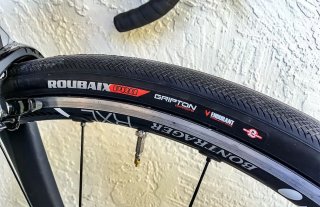
Being that I rode on the Pathfinder Pro on a 60+ mile road ride, I started to consider the idea of going with a tire wider than just 32mm. I love riding on my WTB Horizon tires. So, I suppose what I really wanted was a 700c x 38mm version of those. Unfortunately, WTB doesn’t sell a 700c version of the Horizon. Closest thing they have is the Byway, which isn’t exactly what I was looking for. I want some tread...just not a lot. It still needs to be predominately a road tire but still be capable of handling some gravel.
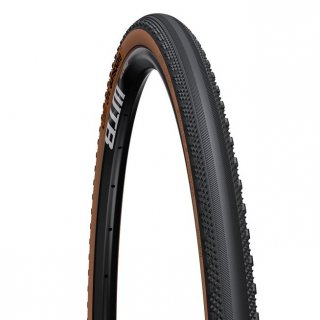
This led me to looking at the Victoria Terreno Zero, a tire designed for cyclocross and gravel. Smooth center with side tread that Victoria describes as “scales”. For a 700c tubeless-ready tire, both 32mm and 38mm versions are available. Very enticing but I still wasn’t sure. The Terreno Zero still felt too aggressive to me.
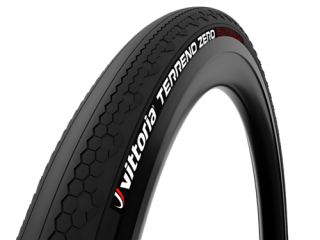
Enter Rene Herse Cycling
During my research, I came across many people commenting about Rene Herse Cycling, formally known as Compass Cycling. I’ve never even heard of this brand and yet it seems that they have quite a following. A lot of people seem to like their tires, including two-time Dirty Kanza winner, Ted King.
Rene Herse tires are Japanese made and are manufactured in the same factory as Panaracer tires. Considering the popularity of the Panaracer gravel tires, especially the Gravel King serious, that holds quite a lot of weight to me. Quality of all the Rene Herse tires is said to be exceptional. Based on their history, seems like these folks know a thing or two about bicycle tires.
The interesting thing about Rene Herse tires is that they’re all pretty much the same. Other than tubulars, the majority of their tires are variants off the same basic styles. Your choice is between a knobby tire or one with a light herringbone pattern, which is very similar to the WTB Horizon.
You start off by picking the tire size (700c, 650b, or 26”), choose the style and width, and then chose a casing. Knobby tires are limited to just a couple of sizes for each wheel size. For the herringbone styles in a 700c tire, you have your choice of seven different tires between 26mm and 55mm. From there, you choose a casing: standard, extra-light, or endurance.
So the decision then becomes: Which style, width, and casing? Your choices may appear limited but, in my humble opinion, I think that’s a good thing. Rene Herse basically took the few styles of tires they knew they could do well and simply applied them across different wheel and tire sizes. Whereas other tire companies offer a robust buffet of tires, Rene Herse prefers a more fine dining approach.
One article about The Best Gravel Tires on the Gran Fondo site reviewed the Barlow Pass extra-light tire and claimed it to be “the fastest tire” out of the ones they tested. I was certainly intrigued but wasn’t sure if I wanted to go with a 38mm tire.
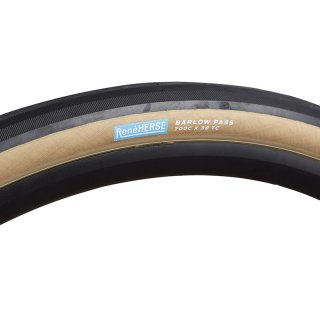
However, after reading an article by Ted King, I narrowed down to the Bon Jon Pass, which is a 35mm tire. Ted recommended the extra-light casing but, for me, I felt a standard casing is likely a smarter choice in that it’ll offer better puncture protection. I considered the endurance casing but felt like it might be a bit too much for the kind of riding I do. I mean, I’m not doing Dirty Kanza or anything like that. Nothing crazy...at least not yet. ;)
Ordering A Set Of Rene Herse Tires
After reading another article about the 700C x 35 Bon Jon Pass TC by Rene Herse Cycles I knew this is exactly what I was looking for. A tire that resembled the WTB Horizon but designed for a 700c wheel. I didn’t want a 32mm tire but wasn’t sure if I wanted to go with a 38mm tire. The Bon Jon Pass fit the bill with a tire that was right in between. Like Rene Herse says on their website, it’s the Goldilocks of tires: not to wide, not too narrow...just right! So, I ordered a set and waited for them to arrive.
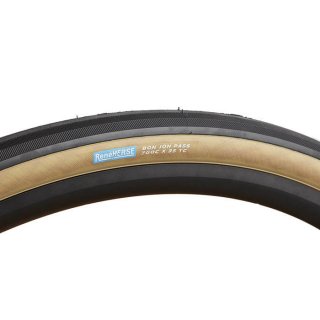
Err...at least I thought I ordered them. When the box arrived in the mail, I opened it up to see a set of Barlow Pass TC tires sitting in the box. I rushed to the computer to lookup my order and, to my dismay, I realized that I screwed up and ordered the wrong damn tires! Doh! Stupid, stupid me! Should have double-checked the order! In hindsight, it seems like an obvious mistake: Barlow Pass...Bon Jon Pass. The names are so similar that I didn’t realize I was on the wrong page when I ordered them. $#@&! Ok then...now what?
I debated about returning them and getting the Bon Jon Pass tires. But after reading up on the differences, I decided to keep them and mount them onto my bike. As Ted King said, “When in doubt, go wider!” Since my bike can accept up to a 38mm tire, might as well go for broke, stick with the larger volume tires, and slap them on there! As you’ll learn, it turned out to be quite the happy mistake.
Installing The Barlow Pass TC Tires
Installation was super easy. Probably the easiest tubeless tires I’ve installed yet. However, compared to other tubeless tires I’ve owned these fit pretty tight, which is fine. I prefer tires that fit nice and snug to the rim. In my mind, I would think this would aid in keeping things air tight.
Because they’re a little tight, depending on your wheels, getting the bead over the rim might be a little hard. I managed to get the first one on without any tools but had to use a tire lever with the second one to get the last part of the tire over the rim. No big deal. Just needed a quick pull over the rim.
Based on a few reviews, Rene Herse recommends using Orange sealant primarily due to its thickness and ability to seep into the sidewalls better. While I’m sure other brands of sealant will work just fine, I went with the recommendation just to be safe. Definitely prefer the sidewalls being properly sealed. Plus, it was a good opportunity to try out a different brand of sealant other than Stan’s, which is the only sealant I’ve ever tried.
Other than that, installation went super smooth. No problems when blasting air into them and getting them to seat. Added a couple of ounces of sealant in each tire, inflated them to max PSI, rotated and bounced them, and then deflated them to a reasonable pressure for a test ride. So far, so good! Let’s roll!
Initial Impressions
After setting the pressure of the tires to 50 PSI in the rear and 48 in the front, I took them for a quick spin to get a feel for them.
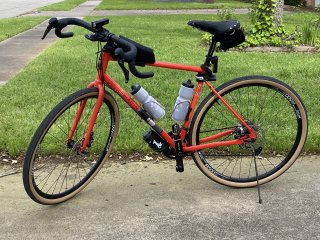
Almost immediately I noticed a difference in the speed. Granted, because of the larger circumference with a 38mm tire, they’re likely to roll faster than a 32mm tire. Even then, the difference in speed between these and even the 38mm Pathfinder Pro’s is quite remarkable. More importantly, they felt faster than the Bontrager R3’s! Off to a good start!
Another thing I noticed was how they handle. I could really feel the tire in a turn on asphalt. There’s a bit of a grabby feel to them. You can actually feel the tires gripping the road a bit. It’s kind of a weird feeling really but strangely reassuring. This is probably the first tire I’ve ever had that sort of feeling with. Pretty cool actually. I’m sure once the tires are broken in a bit the grippy nature of the tires will settle in a bit.
The ride quality appears to be better than just about any tire I’ve ridden on. Due to the difference in sizes, it’s definitely a softer ride compared to the Bontrager R3. The Pathfinder Pro is a bit stiffer tire so I expected the Barlow Pass to be a bit more plush, which it is. The only tire that is softer is the WTB Horizon tires I own. But the ride quality of those is quite different. The Horizon is more of a cruising tire, whereas the Barlow Pass is meant for more speed.
First Big Ride
The short test was quite revealing...but how does the tire fare over a much longer ride? Well...let’s just say I’m giddy with joy over these tires. One reviewer referred to them as “butter slathering goddesses”. After riding on them, I certainly understand what he means by that.
I did a 32-mile ride mostly on paved roads, concrete trails, with a few areas that had small stretches of dirt road due to construction. Starting off on my ride, I noticed all the same attributes I felt on the short test ride the day before. Handling in turns still felt firm and grabby. The plushness of the tire was even more noticeable once I hit some semi-bumpy areas of the road. Definitely absorbs a lot of the stress of the road.
After a while though all of that simply disappeared. It’s not that it went away...it just became invisible. I got used to it relatively quickly. Guess you could say I got all Zen with it and “became one with the tires”. I simply sank into the experience and enjoyed my ride. That’s one of the things that these tires bring: a simple joy of riding.
While stopping at a rest area along one of the trails, an e-bike rider was “checking out my ride” as he put it. He was quite complimentary but the funny thing is that he referred to it as a “commuter bike”. How precious. Poor guy just didn’t know what it was he was looking at.
Continuing on, I turned onto a road that I knew had a lot of construction going on. One part of the road was all torn up and reduced to dirt. A week ago, I rode through the same stretch which, at the time, was super muddy. This time it wasn’t muddy but definitely a little on the rough side. Unlike the 32mm tires before though, the Barlow Pass tires blew over the terrain providing ample cushiness the whole way.
While the vast majority of the ride was on concrete and asphalt, there were a few areas here and there where the terrain was either rough or covered in loose gravel and/or dirt. The handling of the Barlow Pass tires was quite responsive even over this kind of terrain, even more so than the WTB Horizon’s. I think a lot of this is due to the centerline pattern being more pronounced. The centerline of the Horizon is smooth but with a couple of channels separating the centerline from the treaded area of the tire. Whereas, with the Barlow Pass, there’s tread all the way across the tire. The centerline tread is where it really helps I think.
The buttery, comfy goodness of the Barlow Pass tires continued to deliver all the way through the ride. Never was a time when I thought the tire was failing me at any point in my ride. About the only thing I could see doing is going down even a bit more on the PSI of the tires. It’s strange but I think bringing them down a bit more will make for an even better ride.
Speaking of PSI, I checked the tire pressure some hours later after returning from my ride. The good news is that tire pressure only went down about 1 PSI for each tire. That’s pretty good. I honestly expected to see a higher loss. Not uncommon for a new tire to loose a bit of pressure for a week or so while the sealant works its way into the tire. But to see such a low loss like this is exciting. Hope this continues to be the case going forward.
Conclusion
I’m super pleased with my happy mistake. The Barlow Pass tires certainly have met my expectations and then some. Now, would I have been just as happy with the Bon Jon Pass tires? Perhaps, but in the end my mistake likely pointed me in the direction I should have gone in the first place.
So, if you’re looking for a wider, larger volume tire that will work well for a bit of gravel but still excel on pavement I don’t think you can go wrong with a Rene Herse tire. Go wide too! Go as wide as your bike can handle. In my case, it ended up being a Barlow Pass tire. For you, it might be a Bon Jon Pass, maybe something even wider, or something narrower. Regardless of which tire you choose, I think you’ll be pleased with whatever “butter slathering goddess” you end up with. Cheers!
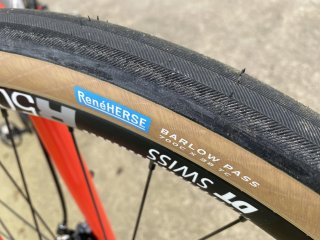
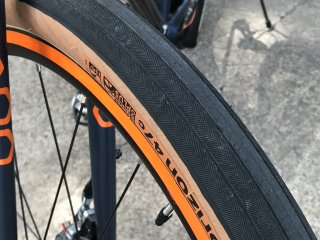
Post a comment!
Comments
Great review, thanks Jeff. See my reply to Ethan below - only two years late! LOL. Cheers, E.
I've run the Barlow Pass (endurance casing) tires on my gravel bike (Merlin titanium), and have racked up several hundred miles on them. I also own the Rene Herse Hurricane Ridge tires that are currently on my other gravel wheelset. Not a bad tire, used them at Cedar City BWR back in 2020, but Jan is basically high when he says they are as fast as a road tire - they just aren't. The Barlow Pass tires are great for light/medium "gravel" roads that fairly flat. They roll well enough on the road, but are obviously not nearly as fast as an actual road tire (I run 25mm Schwalbe Pro One TLE's on my Trek Emonda and there's no comparison). I haven't had any punctures yet on the Barlows and have gone over some pretty rocky stuff. The cons of this tire is cornering and/or off-camber grip on gravel (there basically is none), and steeper descents on gravel, particularly looser/chunkier terrain. You have basically no braking traction as the speed increases. I recently had to ride my brakes pretty hard the entire way down a 7-10% descent a couple miles long up in the mountains, which wasn't much fun. The tires were fine going up. I took the Barlows off today actually, as I'm going to be using some Continental Terra Speed 35mm tires for the upcoming San Diego BWR (which I'm nowhere near in shape for, ugh)....the Terra Speeds are faster, have traction, and should be more aero on the gravel wheels that they're mounted on (32mm external width). After this, I'll be testing out the Tufo Thunderos in 40mm, which seem to be much better suited to the gravel roads of southern AZ over the Barlow Pass tires.
I think what Jan is trying to say is that, all things being equal, a 38mm tire isn't any slower than a much smaller one. The myth he's busting is that smaller tires are faster than wider ones. You're correct when you say that your Barlow Pass tires aren't faster than the 25mm Schwalbe Pro tires...well...not entirely correct. The Endurance versions are definitely slower in that you give up a bit of responsiveness in the casing for more puncture protection. Now, with lighter casings, they're likely to be similar to that of a smaller tire. If the casings were made the same then, yes, Jan would be correct...a smaller tire wouldn't necessarily be any faster than a larger tire. But even with different casings, there are situations where a smaller tire just won't outperform a larger one. One big situation would be rough terrain. No way in hell would a 25mm tire roll faster than a 42mm over the same terrain. The reason is that the 25mm simply can't respond to the terrain as well as the 42mm one.
Great breakdown of those other tires though! Need to take some time to look at all the ones you mentioned. Thanks for sharing! :)
I too purchased and loved the ride quality on the Barlow Pass with standard casing. Unfortunately for me, 120 miles into riding them there was a sidewall puncture. Fixed the hole when I made it home but the damage was done to my confidence in these tires.
I was riding typical gravel in upstate NY. Relatively smooth with no big rocks.
Shame the tires can’t hold up better because the ride quality is superb.
Honestly, I think you're gonna find that to be a problem with virtually any supple tire. The problem is that in order to get the suppleness they have to make the sidewalls a bit thinner. Otherwise, the tire wouldn't be nearly as responsive. That said, consider using the Endurance casing that Rene Herse offers. You lose a bit of suppleness but gain more sidewall protection.
Great detailed review. Could you please share your views on casings. Especially Extralight vs Endurance related to riding surface. I am looking for bikepacking but nothing aggressive e.g. Buffalo to Albany along Erie Canal, Allegheny Passage, etc.
Rene Herse talks a bit about this on a post titled How to Choose Your Rene Herse Tires. Generally, the Extralight is good for speed and comfort due to their extra suppleness. But if you're not comfortabke with the potential of a thinner sidewall and are doing rides with rather rough terrain then the Standard will be better. Endurance casings are good for rides that are longer and more brutal, so if you know you'll be riding in areas with sharp rocks and whatnot then that type of casing is good...but that's more of a specialty case.
Thank you - great write up. My friend recommended the Barlow Pass to me and I'm doing a bit of research. They are quite pricey
I was also looking at the WTB Exposure ? 1/2 the price
Exposures look nice. Looks more or less like a narrower version of the Horizons, which I do have and enjoy riding on. I just got a couple of other sets of Rene Herse tires. I'm building a new gravel-specific bike so I decided to get a set of Bon Jon Pass 700x35c tires for a road-specific setup of my Nicasio. From there, I moved the Barlow Pass tires to my gravel-specific 700c wheelset for longer endurance rides that are mostly on pavement. Been on the fence on what to do with my 650b wheelset though. I had a set of WTB Riddlers which are nice for gravel...but wanted the 650b to be more of a gravel-based wheelset. Decided to go with the Rene Herse 650B x 48 Juniper Ridge. WTB does indeed make a nice tire. I just think the Rene Herse tires provide a nicer ride. :D
I’ve used many different gravel tyres over the past few years. Recently I was running the WTB Horizons 47mm on 650b wheels, but I found that they didn’t hold their structure well even at 60psi and I was always down on the side knobs on smooth tracks / road. I’m a heavy strong rider (100kg) so they were not right for me. The rubber is quite soft. However my partner (60kg) loves hers. So rider weight is a big consideration. My favourite slick Gravel tyres so far are Maxxis Re-Fuse 650b x 50mm. They really hold their shape and they’re fast on all surfaces except mud of course. …I’ve also just ordered some Rene Herse Baby Shoe Pass tyres in 650b x 42 purely for road riding on my carbon 650b’s. …so looking forward to how they compare, as they look like a narrower, more supple version of the Maxxis Re-Fuse.
Great article and detail. Been fighting Chrons since 16. Exercise is the beast that defeats/keeps it at bay. Keep riding! Can these tires (Barlow or Bon Jon) be used w/Tubes? Best...
Thanks! Glad you liked the article! And, yeah, I definitely keep pedaling on! Always feel better after a good ride. :D
As for your question...yes, you can absolutely use tubes with any of the Rene Herse tires. I always keep a spare tube in my saddle bag but you can run the tires with tubes if a tubeless setup isn't desired. It's not quite as ideal since you have to run higher pressures to compensate for the tube itself but that's about it.
Hey Bryan, thanks for the comment! :)
I ride on a set of WTB Horizon tires on my 650b wheelset, which is a 47mm tire. That's actually my first set of gravel tires I bought. Rode on some pretty hefty roads on those before switching to a 700c tire with more tread. Still love riding on them though. They're pretty wide but I just love the feel of them. Super comfy but still pretty fast. No doubt a 700c version would work quite well which , technically, the Snoqualmie Pass is kind in that arena.
Honestly, I think it just depends on your goals. If you're primarily riding on asphalt with a good amount of hard pack gravel roads, I don't think you can go wrong with a 44c. It's free suspension really. Plus, the rolling resistance will improve when going over that hard pack. Shouldn't lose rolling resistance over asphalt either. Now, if it's speed you're after, well...guess that really depends. Obviously, going with a larger tire adds weight so there is that. I honestly wouldn't go under 36c for any sort of gravel.
fun fact, your 38c is heavier than the 44c version
True...but only by 7 grams. Interesting though. I think the reason is due to the casing difference. I bet the 44c version is thinner to allow for more suppleness.
Thanks for the write-up. I'm looking at the Barlow Pass for my gravel bike which sees mostly asphalt and hard packed caliche. Who doesn't love going faster and smoother so these tires popped up on my radar. I'm still on the OEM, cheap, non-tubeless tires.
Do you really believe going bigger? My bike came with 40C and should be able to fit 45C. Do you think I should get the Snoqualmie Pass at 44C?
I had a similar question to the last person. My gravel bike can take a tyre up to 45 Inch... So would opt for the 38 or the 44 rene herse tyre?
If it can take up to a 45" tire then technically the 44 should work. I maxed out my bike early on and had no problems really. What make and model frame do you have?